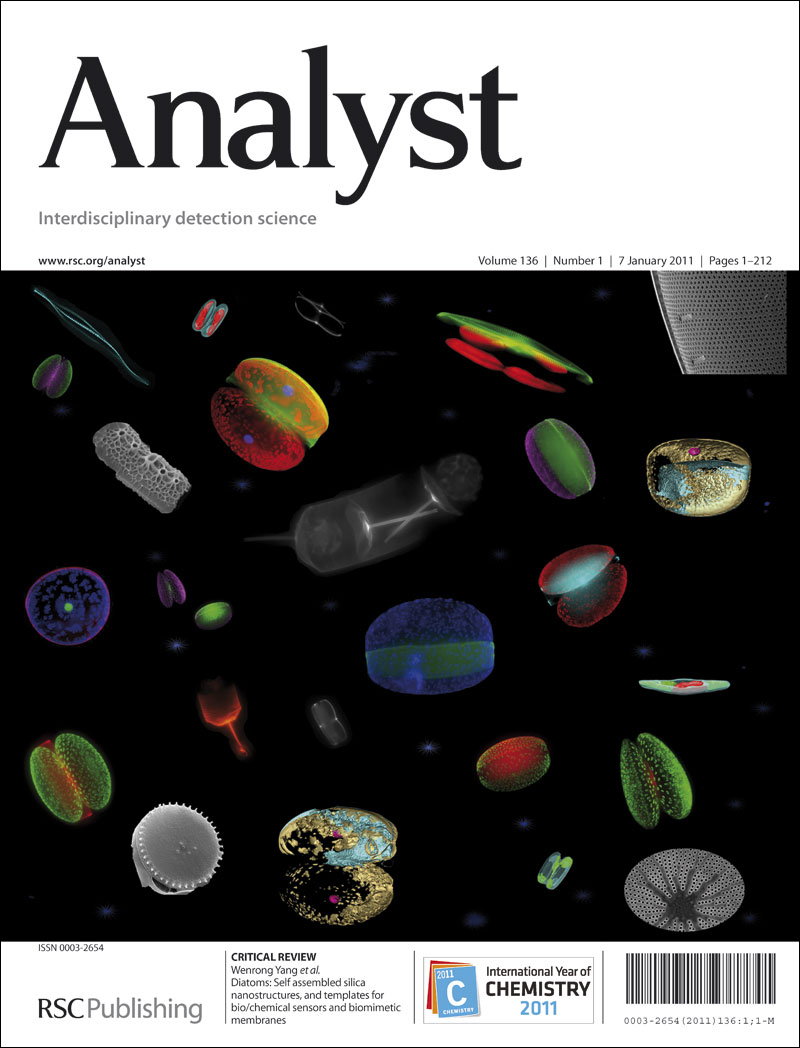Phe-Phe 肽及其纤维的宽带太赫兹特征和振动。
IF 3.6
3区 化学
Q2 CHEMISTRY, ANALYTICAL
引用次数: 0
摘要
近年来,肽基纳米材料因其在生物物理过程中具有良好的功能和较低的生产成本而在药物开发中受到广泛关注。在合成的短肽中,二苯丙氨酸(Phe-Phe)是淀粉样蛋白原纤维中的模板块,具有显著的自组装特性,在药物传递和纳米结构生物材料中具有潜在的应用前景,具有有趣的功能特性和生物相容性。ps时间尺度上的构象柔韧性决定了生物分子与配体的相互作用,是直接探测纳米结构材料生物相容性和功能的有用工具。我们在这里强调了Phe-Phe的太赫兹(THz)指纹,表明在0.2和4太赫兹之间发生了几种分子内和分子间的ps模式。通过实验和计算相结合的方法,我们得到了两种不同的组装形式的Phe-Phe作为结晶的商业粉末和诱导纤维自组装。Phe-Phe的折射率约为1.47,并且在0.55、0.83、1.13、1.40、1.68、2.18、2.71、3.00和3.33太赫兹处检测到属于分子内结构的扭转和弯曲的几个太赫兹振动。此外,对1.8太赫兹模式的观察,分配给分子间振动,突出了太赫兹光谱在检测Phe-Phe不同组装状态方面的影响。本文章由计算机程序翻译,如有差异,请以英文原文为准。
Broadband terahertz signatures and vibrations of Phe-Phe peptide and its fibrils.
In recent years, peptide-based nanomaterials gain significant attention in drug discovery due to their promising functionality in biophysical processes and low production costs. Among synthetic short peptides, diphenylalanine (Phe-Phe), a templating block in amyloid fibrils, shows notable self-assembling properties and potential applications in drug delivery and nanostructured biomaterials with interesting functional peculiarities and biocompatibility. Conformational flexibility at ps timescale shapes biomolecules-ligands interactions and represents a useful tool to directly probe biocompatibility and functionality of nanostructured materials. We highlight here the Terahertz (THz) fingerprint of Phe-Phe, demonstrating that several intramolecular and intermolecular ps modes occur between 0.2 and 4 THz. Through the combination of experimental and computational approaches, we get valuable insights into two different assembled forms of Phe-Phe as crystalline commercial powder and after inducing fibrillar self-assembly. Phe-Phe shows a refractive index of about 1.47, and several THz vibrations, belonging to torsions and bending of the intramolecular structure, detect at 0.55, 0.83, 1.13, 1.40, 1.68, 2.18, 2.71, 3.00, and 3.33 THz. Moreover, the observation of a mode at 1.8 THz, assign to intermolecular vibrations, highlights the impact of THz spectroscopy in detecting different assembly states of Phe-Phe.
求助全文
通过发布文献求助,成功后即可免费获取论文全文。
去求助
来源期刊

Analyst
化学-分析化学
CiteScore
7.80
自引率
4.80%
发文量
636
审稿时长
1.9 months
期刊介绍:
"Analyst" journal is the home of premier fundamental discoveries, inventions and applications in the analytical and bioanalytical sciences.
 求助内容:
求助内容: 应助结果提醒方式:
应助结果提醒方式:


